Posted By admin on May 14, 2020
By Ashley Brugnone, CMP Writer
The final results of the Civilian Marksmanship Program’s (CMP) Aces Postal Matches are now posted.
The Aces Postal is a satellite air gun match for adult and junior competitors – posing several competition opportunities over the course of four quarters (Q1: January-March; Q2: April-June; Q3: July-September; Q4: October-December). Competitors fire at their home ranges on CMP-provided Orion paper targets or electronic targets before being returned to CMP for recording.

A variety of air rifle and air pistol events are conducted during the Aces event, from the comfort of home ranges.
Events include the 3×20 Sporter Junior, 3×20 Precision Junior, 3×20 Adult Sporter, 3×20 Adult Sporter, 60 Shot Rifle and 60 Shot Pistol matches. Para-athletes are also welcome to compete, with SH1 Standing, SH1 Prone, SH2 Prone and SH2 Standing competitions available.
Participants who fire in the Aces Postal earn a uniquely designed poker chip. A new chip is given each quarter, offering the possibility of earning up to four collectable CMP chips!
Below are the results of the 2019 Aces competitions. Top scorer of each quarter is listed, according to event. The best average score of the event over the four quarters is also recognized.
3P Sporter:
Q1: Regina Raquino, 19, of Zion, IL – 562
Q2: Shelby Carr, 16, of Alliance, NE – 560
Q3: Shelby Carr, 16, of Alliance, NE – 558
Q4: Shelby Carr, 16, of Alliance, NE – 547
Best Average: Regina Raquino, 19, of Zion, IL – 562
3P Precision:
Q1: Katrina Demerle, 15, of Hamilton, OH – 590
Q2: Emily Endecott, 17, of Cleveland, MO – 593
Q3: Emily Endecott, 17, of Cleveland, MO – 592
Q4: Emily Endecott, 17, of Cleveland, MO – 587
Best Average: Emily Endecott, 17, of Cleveland, MO – 589.25
Adult Sporter:
Q1: Jeffrey Schneider, 68, of Tucson, AZ – 526
Q2: Jeffrey Schneider, 68, of Tucson, AZ – 530
Q3: Jeffrey Schneider, 68, of Tucson, AZ – 535
Q4: James Edwards, 51, of Tabor, IA – 543
Best Average: Jeffrey Schneider, 68, of Tucson, AZ – 527.75
Adult Precision:
Q1: Julie Klusmeier, 24, of Cincinnati, OH – 579
Q2: Wesley Shumaker, 64, of Los Alamos, NM – 571
Q3: Julie Klusmeier, 24, of Cincinnati, OH – 584
Q4: Wesley Shumaker, 64, of Los Alamos, NM – 577
Best Average: Julie Klusmeier, 24, of Cincinnati, OH – 575.5
60 Shot Rifle:
Q1: Abi Winegarden, 36, of Pittsboro, NC – 617.1
Q2: Katrina Demerle, 15, of Hamilton, OH – 616.6
Q3: Abi Winegarden, 36, of Pittsboro, NC – 614
Q4: Chance Cover, 28, of Oak Harbor, OH – 617.1
Best Average: Chance Cover, 28, of Oak Harbor, OH – 617.1
60 Shot Pistol:
Q1: George Siordian, 56, of Phoenix, AZ – 544
Q2: Bob Lineaweaver, 46, of Chambersburg, PA – 553
Q3: Bob Lineaweaver, 46, of Chambersburg, PA – 554
Q4: David Aglietti, 47, of Carson City, NV – 571
Best Average: David Aglietti, 47, of Carson City, NV – 571
PPP – International Standing:
Q1: George Turbes, 13, of Redwood Falls, MN – 333
Q2: Kayley Hullender, 18, of Seaford, VA – 323
Q3: Kayley Hullender, 18, of Seaford, VA – 315
Q4: Kayley Hullender, 18, of Seaford, VA – 315
Best Average: George Turbes, 13, of Redwood Falls, MN – 321.5
PPP – Standing Support:
Q1: Todd Deterling, 14, of Redwood Falls, MN – 321
Q2: No participants
Q3: Matthew Turbes, 15, of Redwood Falls, MN – 265
Q4: Todd Deterling, 14, of Redwood Falls, MN – 282
Best Average: Todd Deterling, 14, of Redwood Falls, MN – 288
PPP – Basic:
Q1: Shaun Matthews, 13, of Redwood Falls, MN – 305
Q2: No participants
Q3: Griffin Detering, 11, of Redwood Falls, MN – 207
Q4: Griffin Detering, 11, of Redwood Falls, MN – 150
Best Average: Shaun Matthews, 13, of Redwood Falls, MN – 305
Adaptive Prone, Adaptive Standing: No participants in any quarter
Adaptive Pistol: Only one participant each quarter
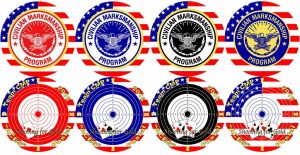
Each quarter of the Aces Postal match offers a unique poker chip for each participant as a souvenir.
A complete list of results from each quarter can be found on the CMP’s Competition Tracker page, by quarter.
Q1: https://ct.thecmp.org/app/v1/index.php?do=match&task=edit&match=17508&tab=results
Q2: https://ct.thecmp.org/app/v1/index.php?do=match&task=edit&match=17509&tab=results
Q3: https://ct.thecmp.org/app/v1/index.php?do=match&task=edit&match=17512&tab=results
Q4: https://ct.thecmp.org/app/v1/index.php?do=match&task=edit&match=17511&tab=results
For more information on the Aces Postal, including how to become involved in the 2020 Aces Postal Quarters, visit the CMP webpage at http://thecmp.org/youth/aces-postal/.
The Civilian Marksmanship Program is a federally chartered 501 (c) (3) non-profit corporation. It is dedicated to firearm safety and marksmanship training and to the promotion of marksmanship competition for citizens of the United States. For more information about the CMP and its programs, log onto www.TheCMP.org.
Category: Airgun, CMP, Events, precision shooting |
No Comments »
Tags: civilian marksmanship program, cmp, competitive shooting, competitive shooting programs, Foundation, jr shooter, jr shooters, junior, junior camps, junior shooters, junior shooting camps, junior writers, juniors, kids, learn to shoot, learning to shoot, Olympics, plinking, SASP, Scholastic, sctp, shooting, shooting sports, SSSF, usa shooting, youth shooting, youth shooting sports


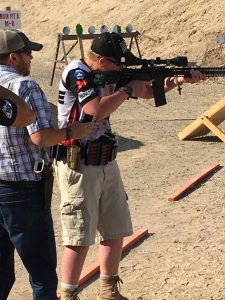


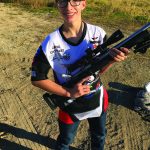


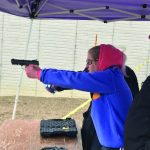


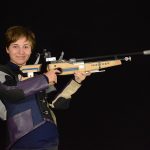


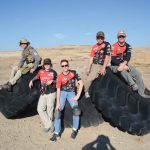
 From Junior Shooters Volume 31 Summer 2018
From Junior Shooters Volume 31 Summer 2018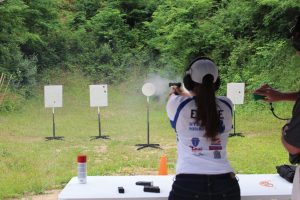 As a young child, I had grown up around firearms. Before I was introduced to the Scholastic Pistol Program, as it was called at the time, the most experience I’d had with any kind of firearm was a BB gun that my dad gave me when I was about 7 years old. It was because of him that I became interested in outdoor sports, such as shooting. Later he introduced me to different types of firearms and I developed a liking for handguns. I was 13 years old when I started shooting competitively in the action program, after he had encouraged me to give it a try. As a beginner and one of the younger athletes on the team, I was incredibly shy and admittedly not very good. For a while, the only reason I kept with the program was because my brothers were involved in it as well. We had all joined a local team in Michigan; the W.W.C.C.A. Straight Shooters. Starting off, I was by no means shooting competitive scores. Being inexperienced, it was difficult for me to hit the targets and I had little speed and consistency. This would improve greatly with the coaching I received.
As a young child, I had grown up around firearms. Before I was introduced to the Scholastic Pistol Program, as it was called at the time, the most experience I’d had with any kind of firearm was a BB gun that my dad gave me when I was about 7 years old. It was because of him that I became interested in outdoor sports, such as shooting. Later he introduced me to different types of firearms and I developed a liking for handguns. I was 13 years old when I started shooting competitively in the action program, after he had encouraged me to give it a try. As a beginner and one of the younger athletes on the team, I was incredibly shy and admittedly not very good. For a while, the only reason I kept with the program was because my brothers were involved in it as well. We had all joined a local team in Michigan; the W.W.C.C.A. Straight Shooters. Starting off, I was by no means shooting competitive scores. Being inexperienced, it was difficult for me to hit the targets and I had little speed and consistency. This would improve greatly with the coaching I received. During my second year on the team, I was selected as team captain. As captain, I often coordinated activities and exercises for practices. One thing I enjoyed in this position was the opportunity to invent new stages with steel for small competitions amongst our team. This fit well with an annual event I was responsible for. Every year, the Straight Shooters have a “campout” at the head coach’s property in northern Michigan. The coaches brought the team’s steel and we were able to set up some of the stages I had created. We had a small competition, athletes intermixed in squads of parents and volunteers, which lasted most of the day. After the competition, we had a small award ceremony and handed out handcrafted first, second, and third place medals. It was in these activities that I was able to watch the members of my team have fun while improving and growing in the sport. This identified to me personally, my passion of perfecting and helping and encouraging others to learn and improve.
During my second year on the team, I was selected as team captain. As captain, I often coordinated activities and exercises for practices. One thing I enjoyed in this position was the opportunity to invent new stages with steel for small competitions amongst our team. This fit well with an annual event I was responsible for. Every year, the Straight Shooters have a “campout” at the head coach’s property in northern Michigan. The coaches brought the team’s steel and we were able to set up some of the stages I had created. We had a small competition, athletes intermixed in squads of parents and volunteers, which lasted most of the day. After the competition, we had a small award ceremony and handed out handcrafted first, second, and third place medals. It was in these activities that I was able to watch the members of my team have fun while improving and growing in the sport. This identified to me personally, my passion of perfecting and helping and encouraging others to learn and improve. Throughout my entire competitive career as a Straight Shooter, and even now as a Spartan, my dad has been my biggest supporter and encourager. In addition to that, he has also gone through all the steps of becoming a Certified Pistol Coach through the NRA as well as registering as a coach through SASP, investing much of his time into the team.
Throughout my entire competitive career as a Straight Shooter, and even now as a Spartan, my dad has been my biggest supporter and encourager. In addition to that, he has also gone through all the steps of becoming a Certified Pistol Coach through the NRA as well as registering as a coach through SASP, investing much of his time into the team. school, towards the end of my junior year, I started gathering information on collegiate-level shooting teams. This was enforced by my encounters with the Michigan State Shooting Sports Club Pistol Team really early in my shooting career during competition. I had been researching Michigan State and due to everything they had to offer, academically and recreationally, made the decision to attend there in Fall of 2017. After announcing my decision, I had started forming connections with members of the team who later invited me to attend practices with them throughout the summer.
school, towards the end of my junior year, I started gathering information on collegiate-level shooting teams. This was enforced by my encounters with the Michigan State Shooting Sports Club Pistol Team really early in my shooting career during competition. I had been researching Michigan State and due to everything they had to offer, academically and recreationally, made the decision to attend there in Fall of 2017. After announcing my decision, I had started forming connections with members of the team who later invited me to attend practices with them throughout the summer.



 velocity, accuracy, and power! We were hitting small rifle poppers at 100 yards within minutes. I am very impressed with this rifle and if you already own a TCM pistol, you will want to get one of these.
velocity, accuracy, and power! We were hitting small rifle poppers at 100 yards within minutes. I am very impressed with this rifle and if you already own a TCM pistol, you will want to get one of these.



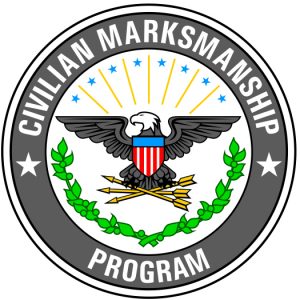
 “In our sport during this time, we need to practice safety on two fronts – safe firearms handling at all times and providing a healthy place for competitors to hone their skills. That means practicing appropriate social distancing, disinfecting common surfaces and screening participants for health concerns,” she said.
“In our sport during this time, we need to practice safety on two fronts – safe firearms handling at all times and providing a healthy place for competitors to hone their skills. That means practicing appropriate social distancing, disinfecting common surfaces and screening participants for health concerns,” she said. In the wake of the COVID-19 pandemic, many CMP-affiliated clubs with rifle and pistol ranges have either shut down or curtailed marksmanship activity to help protect participants from the potential spread of the virus.
In the wake of the COVID-19 pandemic, many CMP-affiliated clubs with rifle and pistol ranges have either shut down or curtailed marksmanship activity to help protect participants from the potential spread of the virus.



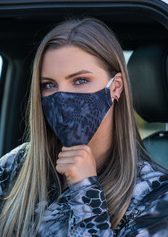
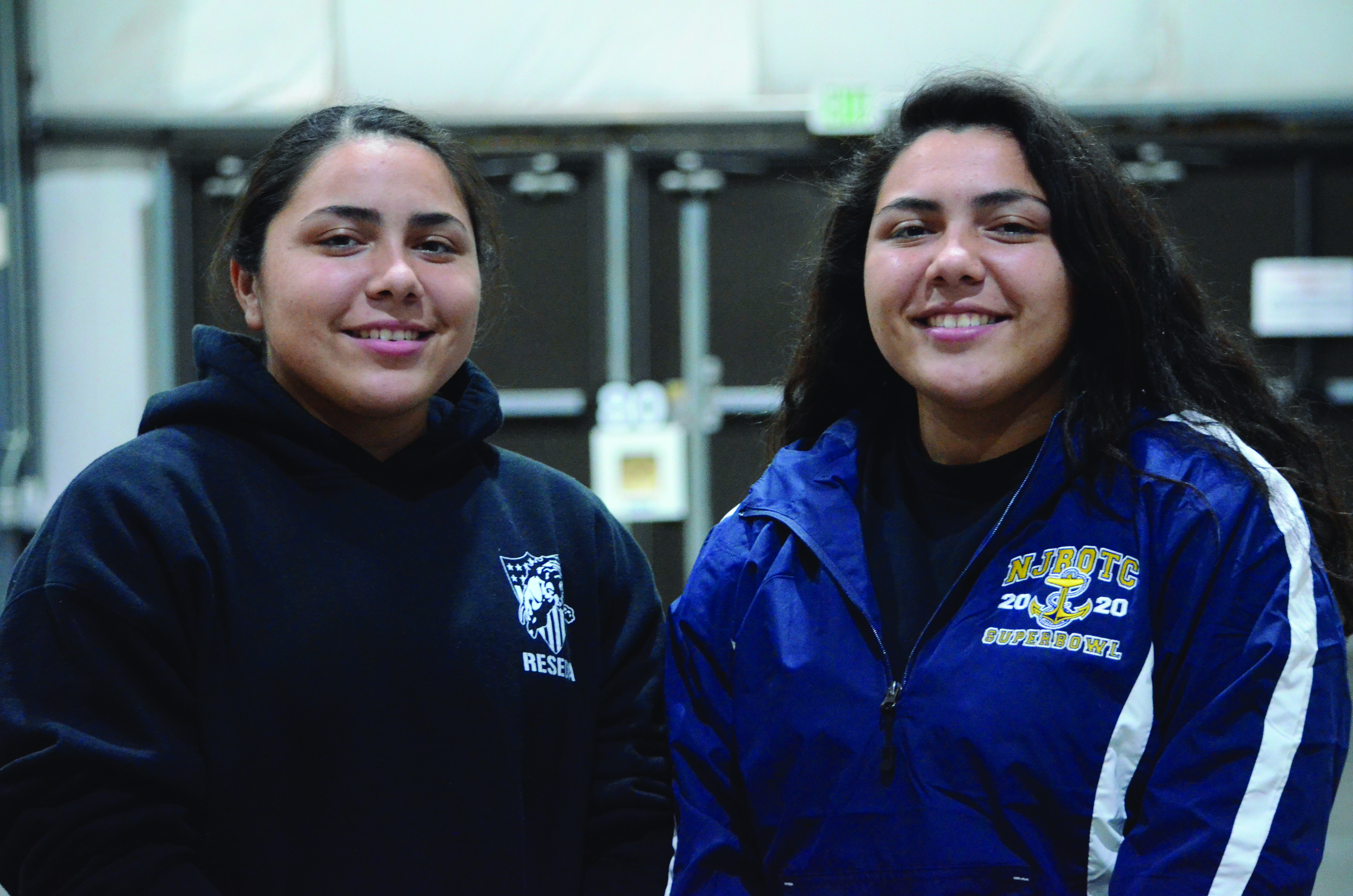

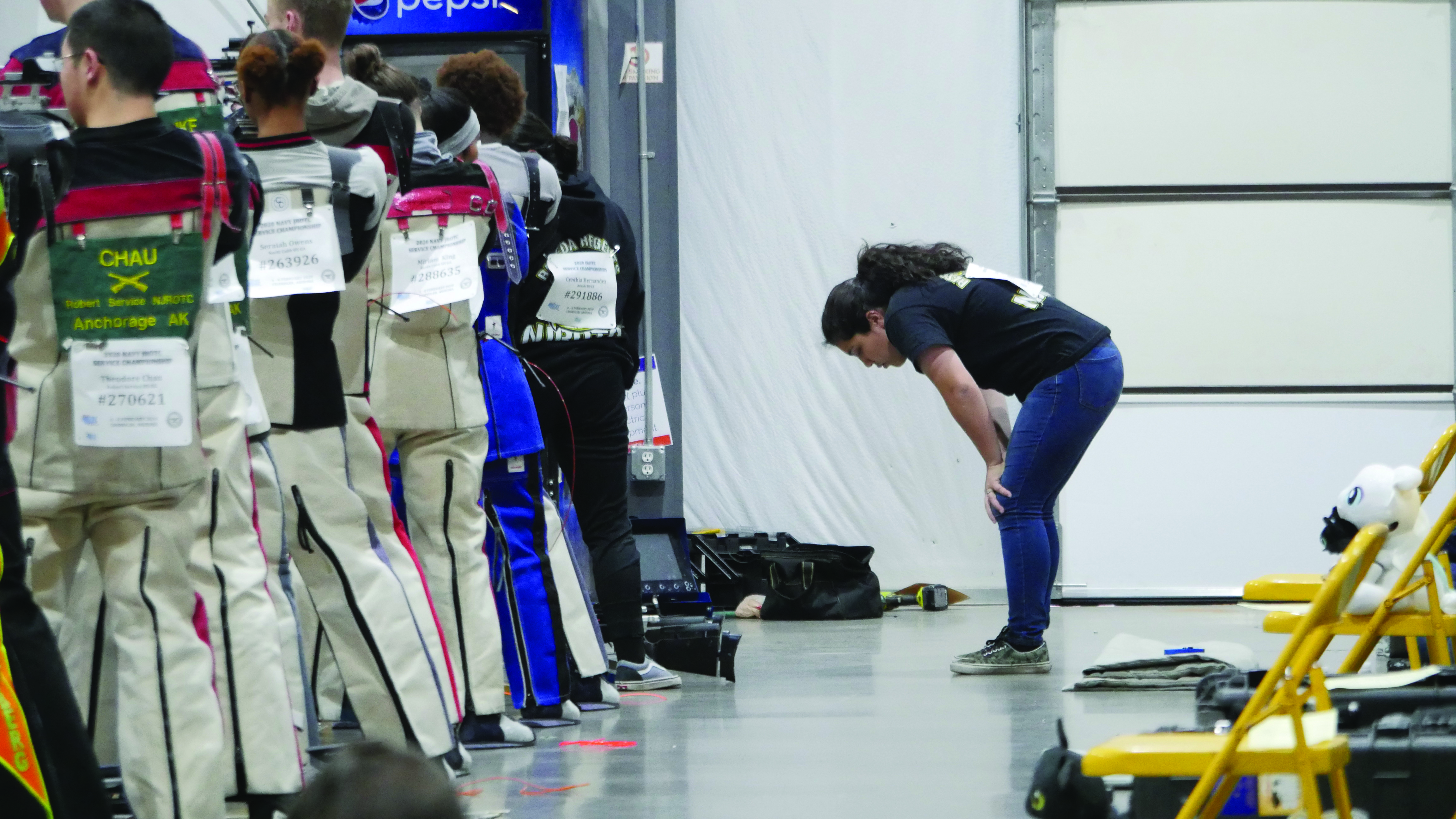
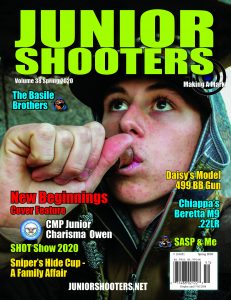 Yes, That’s right. Junior Shooters magazine Spring issue is out there!
Yes, That’s right. Junior Shooters magazine Spring issue is out there!



 Since 2013, the SSSF has awarded over $450,000 in scholarship funds benefiting over 450 student-athletes, from nearly all 50 states in the Scholastic Clay Target and Scholastic Action Shooting programs. We are pleased to announce that last year’s Scholarship Program awarded over $100,000 to qualifying applicants in $500 or $1,000 amounts.
Since 2013, the SSSF has awarded over $450,000 in scholarship funds benefiting over 450 student-athletes, from nearly all 50 states in the Scholastic Clay Target and Scholastic Action Shooting programs. We are pleased to announce that last year’s Scholarship Program awarded over $100,000 to qualifying applicants in $500 or $1,000 amounts. Needs-based awardees.
Needs-based awardees.




